Angeline Schellenberg’s Writing Space
My requirements for a productive writing space are simple: sunshine, silence, and a dog.
In summer, I write outdoors whenever possible. This past summer, our neighbour from across the street built us a patio on the east side of our house under our apple trees. He took his time, partly because he’s a perfectionist, and partly because he’s lived alone since his wife—my dear friend Michelle—died; while he worked, he was never without food and company.

I’ve arranged the space with an old church pew by the table for when I’m religiously scribbling/typing and a swing at one end for reading and naps. My dog Lily dozes in a sunny patch on the lawn.
The only sounds are the birds at the feeder, the wind in the leaves, and the occasional banjo solo from the open window next door.

Lovely as the patio is, since it is situated in Winnipeg, Canada, I need another space to write from October to May. Thankfully, the prairie sun follows me indoors.
For years, I’ve written in the corner of the living room sectional, in front of the picture window. The room is open to the front entrance, kitchen, and hallway, and features my daughter’s upright piano. Sunshine: check. Dog: check. Silence: sometimes.
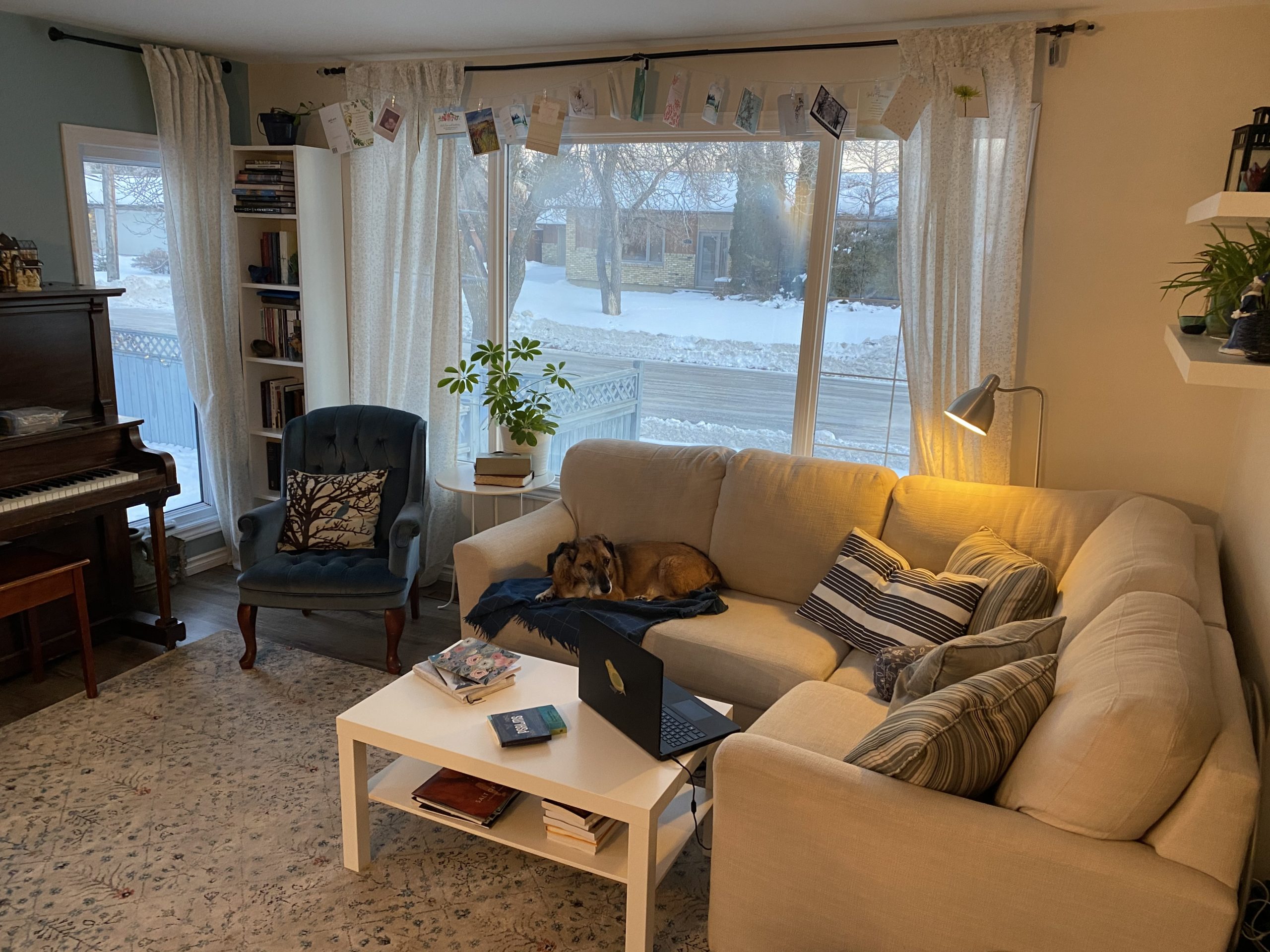
This winter, we moved our daughter to a newly finished, bigger bedroom in the basement, and turned her old room into an office. We’d wanted a separate workspace for a while, but with me being laid off at the end of 2019, and my husband and son zooming in to work or university from home due to COVID, the need became more pressing.
For a small room, it fits a lot of stuff: our old kitchen table works as a writing desk, my Oma’s old recliner is perfect for reading or napping, shelves and baskets hold my books and art supplies (pottery glazes; napkins and embroidery floss for journal making; newspapers for collaging). There is even room on the floor for a half-completed puzzle.
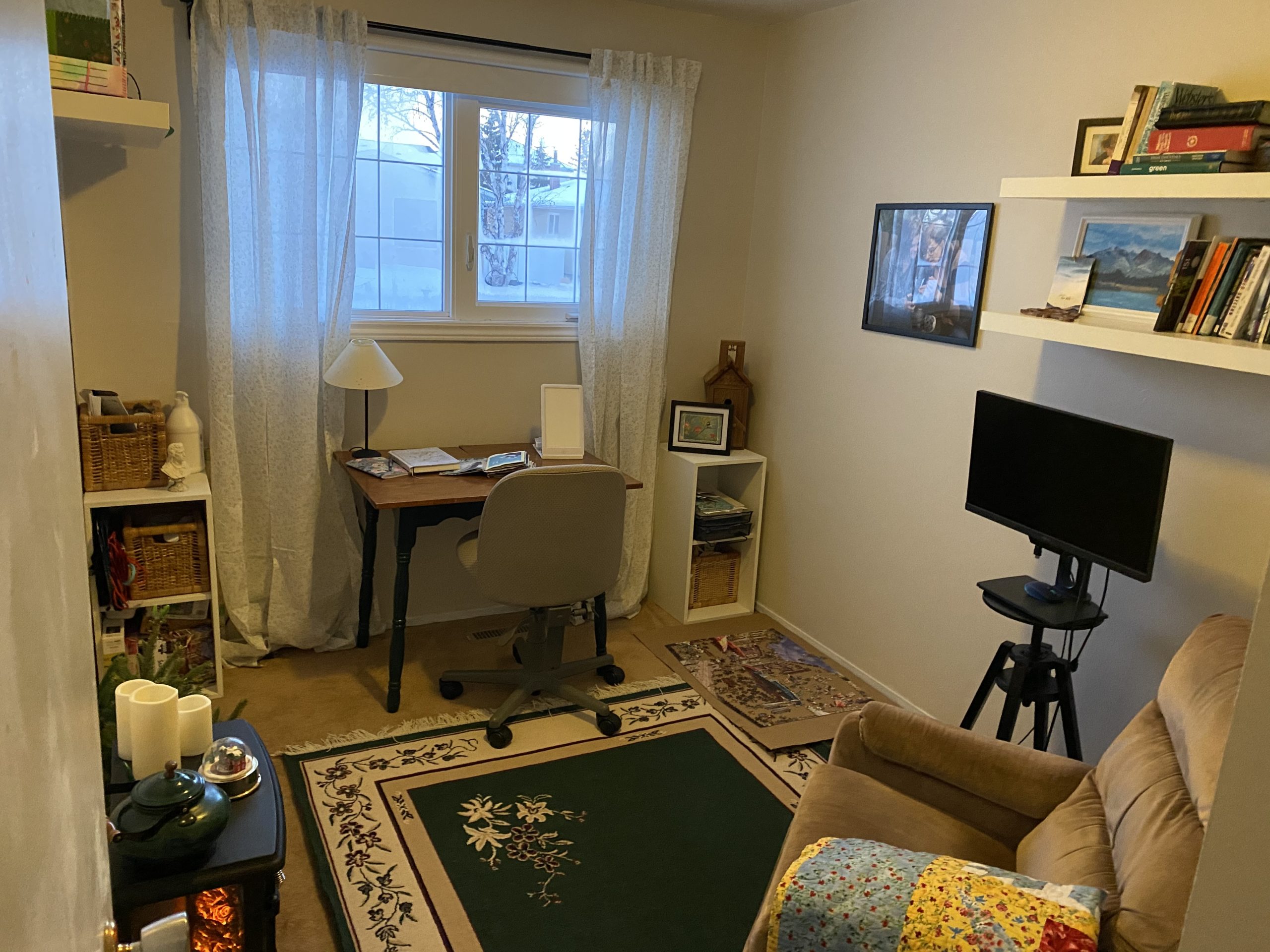
The walls are decorated with framed sunsets and children from my husband’s photography shows, my daughter’s acrylic paintings, and my mom’s cross-stitch of a red barn which I nabbed from my parents’ house when they left the farm.
Scattered around the room are reminders of my little brother Tim who died of liver cancer this past November: a framed sympathy card of a chickadee, a key my college roommate sent me because Tim collected keys (1,800 of them!), a wooden bear Tim made in shops class, the pottery tractor I made for his last birthday. I keep them here to protect them from the splatter and bustle of the rest of the house. They give the room weight.

The sun streams in through the window, lifting my mood. The only sounds interrupting the words in my head are my son’s giggles through the wall. And there’s my Lily: asleep in front of the electric fireplace.
Angeline Schellenberg’s full-length debut about raising children on the autism spectrum, Tell Them It Was Mozart (Brick Books, 2016), won three Manitoba Book Awards and was a finalist for a ReLit Award for Poetry. In 2019, she launched poetry chapbooks with Kalamalka, JackPine, and Dancing Girl Presses, and received nominations for The Pushcart Prize and Arc Poetry Magazine’s Poem of the Year. The host of Speaking Crow, Winnipeg’s longest-running poetry open mic, Angeline has read at literary events across Canada. Her latest book, Fields of Light and Stone (University of Alberta Press, 2020), is a series of elegies for her Mennonite grandparents. When she’s not writing, Angeline enjoys creating pottery, talking to dogs, and eating other people’s baking.
Photos courtesy of Sigmund



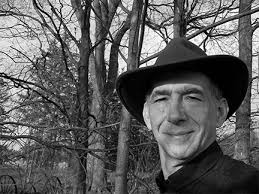

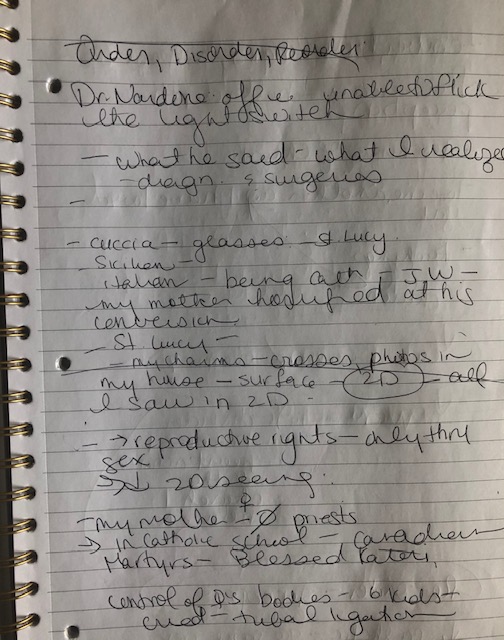


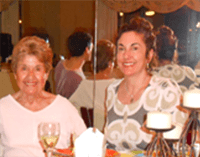 My relationship with my mom, a psychiatrist, had always been fraught and painful. She was a hypercritical woman with lofty expectations for her three children. It was hard to get her attention, even tougher, her approval. (Her own mother, my grandmother, Florence, had been even more daunting.) Busy, respected, and known in the community, my mom was one of the few professional working mothers in my group of friends, one of a minority of women in her medical school class at New York University. These were accomplishments I came to admire later on, as she provided me with a role model of a woman with a successful career.
My relationship with my mom, a psychiatrist, had always been fraught and painful. She was a hypercritical woman with lofty expectations for her three children. It was hard to get her attention, even tougher, her approval. (Her own mother, my grandmother, Florence, had been even more daunting.) Busy, respected, and known in the community, my mom was one of the few professional working mothers in my group of friends, one of a minority of women in her medical school class at New York University. These were accomplishments I came to admire later on, as she provided me with a role model of a woman with a successful career.
